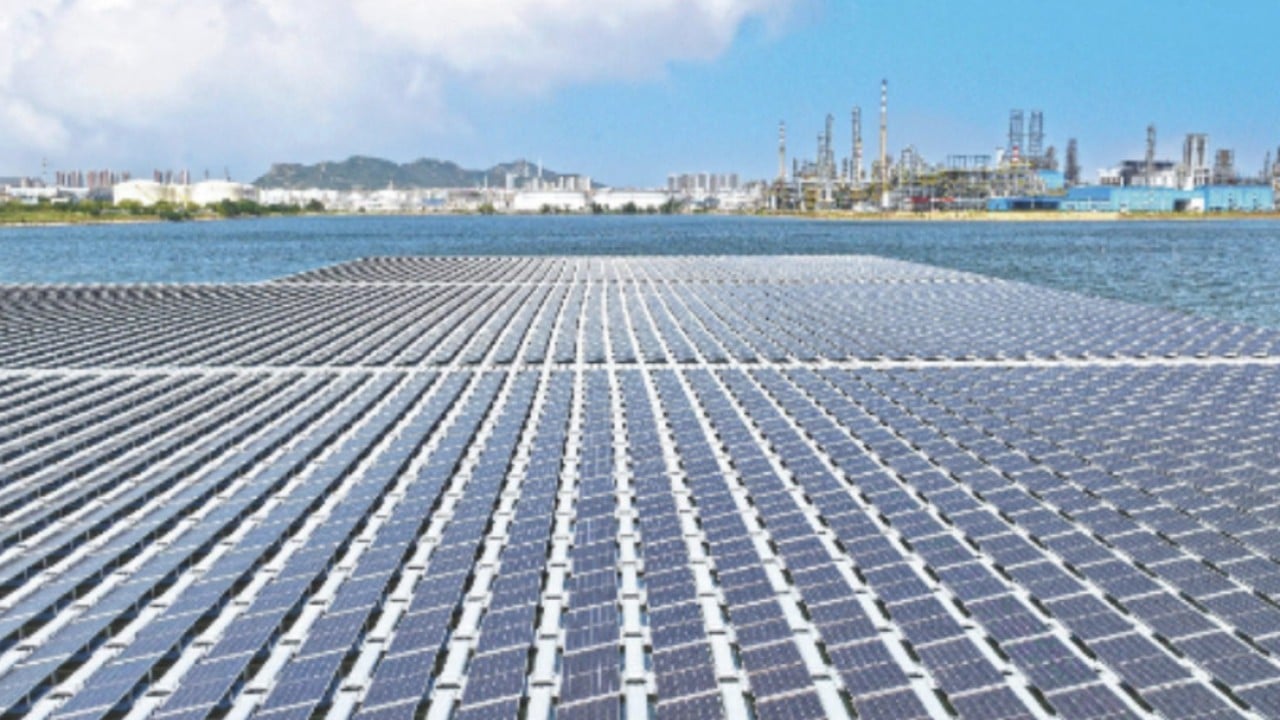China has launched a fully seawater-based solar energy system – the first of its kind suitable for industrial use and large-scale power production – as part of broader efforts to expand renewables in coastal regions, boost the maritime economy and drive industrial innovation.
Advertisement
Located in Qingdao, Shandong province, the floating solar station builds upon another offshore photovoltaic power generation project launched in late May. Together, they form the largest initiative of its kind by Sinopec, one of China’s biggest state-owned companies.
According to the State Council’s information website, the two projects could generate a combined 16.7 million kilowatt-hours of electricity annually, cutting carbon dioxide emissions by 14,000 tonnes.
The floating power station, built in coastal waters by Sinopec Qingdao Refining & Chemical, spans about 60,000 square meters and has an installed capacity of 7.5 megawatts. The solar panels rise and fall with the tide, generating energy from the ocean’s surface. Their proximity to the water boosts efficiency by 5 to 8 per cent, according to the site.
The project is part of Beijing’s broader strategy to reduce dependence on imported fuels and shift to home-grown renewables. In 2020, the government set a target of more than 1.2 billion kilowatts of installed wind and solar capacity by 2030.
Advertisement
Beijing views emerging industries such as photovoltaic energy as essential to developing “new quality productive forces” – a growth model centred on technological breakthroughs and industrial upgrades, repeatedly mentioned by President Xi Jinping.

